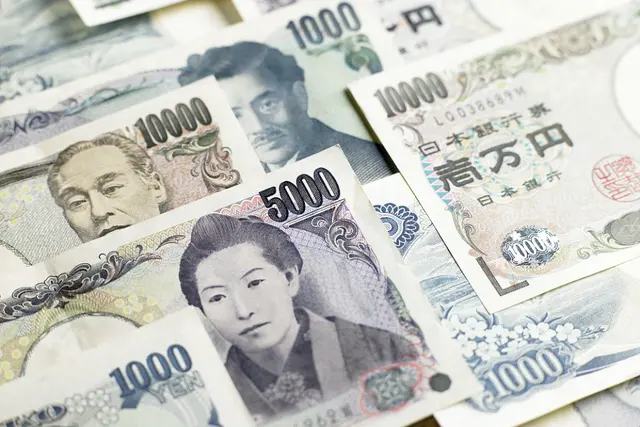The Japanese yen traded at 160.86 against the US dollar at one point on Thursday morning - its weakest level in over 37 years since December 1986. The drop came after the yen broke past 160 on Wednesday, raising expectations that Japanese authorities might intervene in the foreign exchange market again.
Selling of the yen and buying of the dollar has been prevailing, with an awareness of the difference in interest rates between the United States and Japan.
A view that the US Federal Reserve is in no hurry to cut interest rates spread among investors on Wednesday after a senior Fed official expressed caution in considering future changes in the stance of US monetary policy on Tuesday.
In a speech in London on Tuesday, Federal Reserve Governor Michelle Bowman said, "We are still not yet at the point where it is appropriate to lower the policy rate," leading to increased speculation that the Fed will keep interest rates high for longer.
Nothing especially consequential happened in Japan or the US on Wednesday. What seems to have occurred is that the news during the day in Asia of a substantial upside surprise in Australia's consumer price index for May raised the perceived probability of a rate hike by the Reserve Bank of Australia, which added to the upward pressure on interest rates worldwide and put further downward pressure on the yen, a low-interest currency, said Yujiro Goto, head of foreign exchange strategy at Nomura Securities.
USD/JPY's rise to an over 37-year high has prompted Masato Kanda, Japan's vice-minister of finance for international affairs, to ramp up the verbal intervention.
At the beginning of this week, Kanda stated that the Finance Ministry was standing ready to intervene 24 hours a day, while refraining from calling currency movements overdone, but on Wednesday commenting on the "rapid weakening" of the yen, said Goto in a report released on Thursday.
"Kanda's latest remarks show a heightened level of alert. While he said that there is no particular pre-determined exchange rate at which the ministry would intervene, he mentioned that there is widely shared perception in the market that the move is being powered by speculators, adding that the recent moves are one-directional and warrant serious concern," Goto said.
He noted that the yen's depreciation accelerated once the 160 handle was breached, and the currency has lost about 2.3 percent of its value relative to last week's USD/JPY intraday low of 157.16.
On March 25, Kanda said it is uncomfortable to see big fluctuations of dollar-yen rates, which moved 4 percent in just two weeks.
"If we posit a 'Kanda rule' that has the finance ministry intervening when USD/JPY rises by 4 percent within a two-week period, the implication would be that intervention could happen if USD/JPY reaches the 162 handle," Goto said in the report.
Despite the elevated alert toward the possibility of a forex intervention, Nomura's research analysts expect the yen to continue being pushed toward further weakness for as long as US equities continue to hold up well.
"If the Japanese currency authorities and the Bank of Japan are slow to act, we can still picture a risk scenario in which USD/JPY rises to around 170," Goto said.
The Japanese currency fell to 160.24 against the US dollar on April 29, triggering the government and the Bank of Japan's forex intervention. Japan's Ministry of Finance said it spent about 9.79 trillion yen ($61 billion) between April 26 and May 29 to slow the yen's rapid depreciation against the dollar. However, the effect of the intervention did not last long.
The Japanese Finance Ministry's interventions to support the yen have had limited success, which can be attributed to strong market forces and speculative trading, said Marco Sun, chief financial markets analyst at MUFG Bank (China).
"The persistent interest rate differential between the US and Japan continues to exert a powerful influence that short-term interventions struggle to counteract," Sun said.
In addition, data from the Commodity Futures Trading Commission, or CFTC, indicates that speculative positioning has been a significant factor.
"When Japan's Ministry of Finance intervenes, it can signal to speculators that there is an underlying weakness, prompting them to increase their selling of the yen," Sun said.
The CFTC data shows that speculative traders have maintained substantial short positions on the yen, betting on its continued depreciation. This speculative pressure can overwhelm the impact of government interventions, he added.
Market participants are keenly attuned to the Bank of Japan's upcoming policy decisions, with two primary possibilities — an interest rate hike and reduction in purchases of Japanese government bonds — garnering significant attention.
A rate increase would bolster the yen's valuation by enhancing its relative attractiveness to investors. However, this tightening measure could also pose a headwind to Japan's economic growth trajectory, Sun said.
Scaling back on government bond buying could exert upward pressure on interest rates, potentially achieving a similar goal of strengthening the yen. Nevertheless, such a move carries the risk of inducing market volatility, potentially undermining the intended effect, he said.
"The BOJ faces a delicate balancing act, weighing the need to curb inflation and support the yen against the potential for hindering economic recovery," he said.
chinadaily
 简体中文
简体中文

